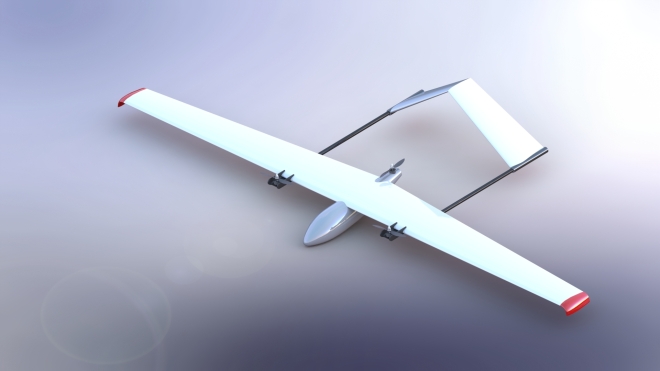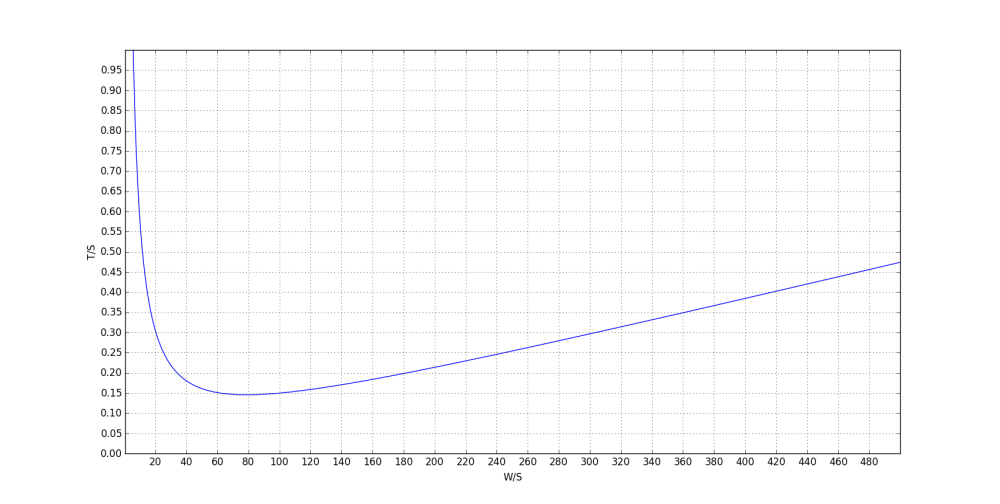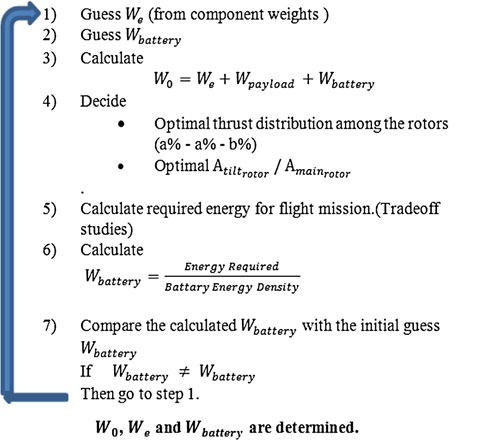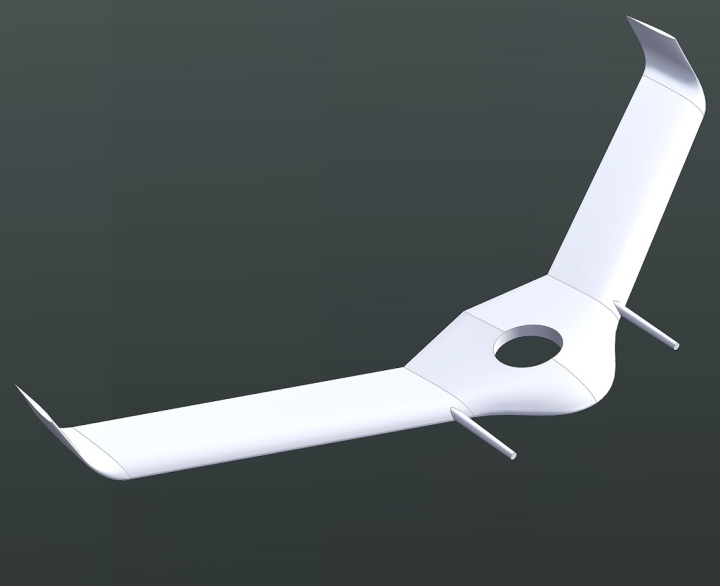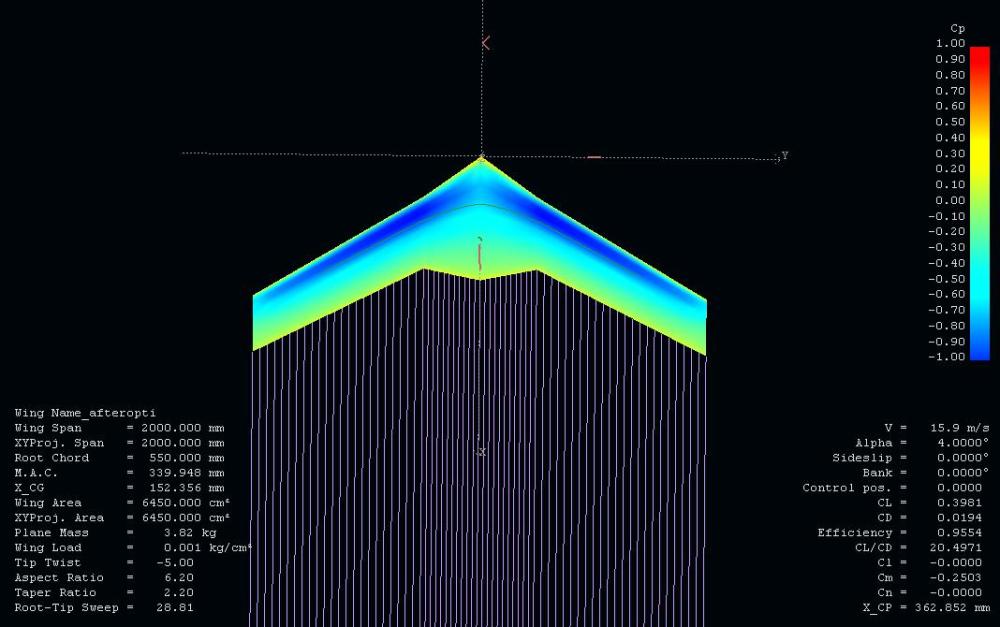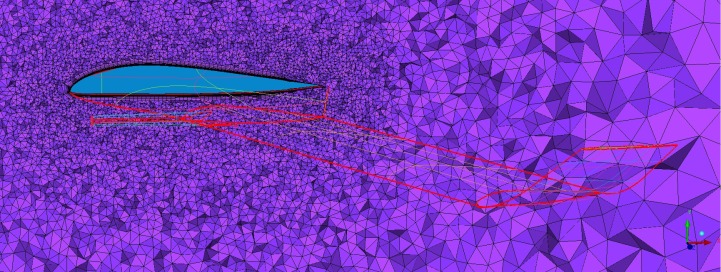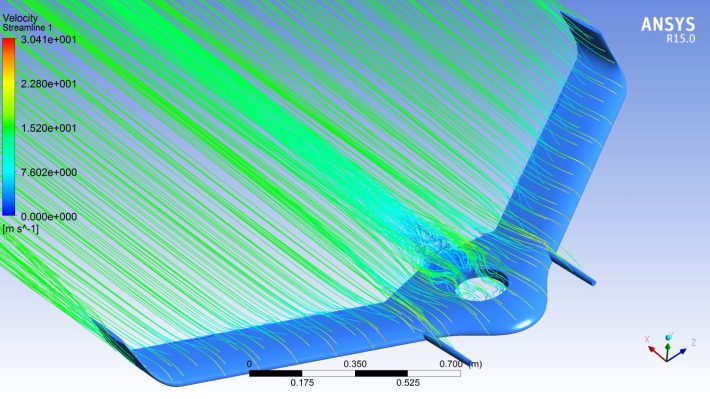Hello all ! It's been a while since I last posted, it's mostly because I've been busy brushing up on Aircraft controls and dynamics so that I can create an autopilot for the VTOL design. We re-iterated our previous design which was a flying wing to a fixed wing aircraft because no matter how much we tried to optimize it, the performance was always below what is achievable from fixed wing UAVs. So we decided to make the switch and moved to a twin boom inverted V-tail design with three motors.
We got a very efficient forward flying characteristics with the design at a cruise speed of around 20 m/s it can fly for an hour and MTOW is 6.2kg. With the design procedure that was almost similar to my previous post where I talked about Flying wing tilt rotor design, we moved to bigger challenges. The first was to control the aircraft during the three flight regimes : hover, transition and take off. To get the control and stability, derivatives the UAV was modeled in USAF DATCOM+ and the required parameters were obtained. But since the software was written in 1976 it doesn't provide support for V-tail. However, after posting on online forums I was told there's hardly a difference in the stability derivatives and hence, the following model was used to get the results.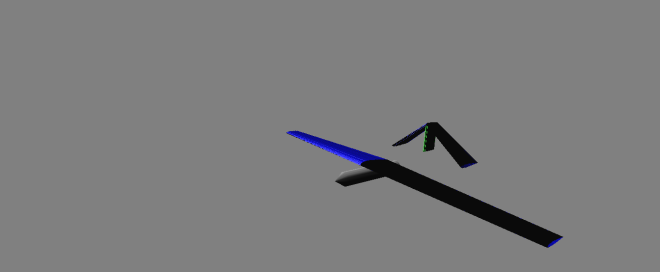 The vertical stabilizer can be seen in the above image which is the drawback of outdated software. However, AVL can also be used to generate control/stability derivatives. I plan to use it in future iterations of the design to get more accurate model. The next step was dynamic modelling of the aircraft in MATLAB. It was started with designing a GUI for visualizing the effect of various input parameters on the UAV. Below is the GUI that was created in MATLAB for the aforementioned purpose.
The vertical stabilizer can be seen in the above image which is the drawback of outdated software. However, AVL can also be used to generate control/stability derivatives. I plan to use it in future iterations of the design to get more accurate model. The next step was dynamic modelling of the aircraft in MATLAB. It was started with designing a GUI for visualizing the effect of various input parameters on the UAV. Below is the GUI that was created in MATLAB for the aforementioned purpose.
Once this was done the rigid body equations were modeled (PS debugging in MATLAB is a pain) and the following window was created. This is a screen-grab of the second version of GUI with control gains that allowed me to change the parameters while running the simulation.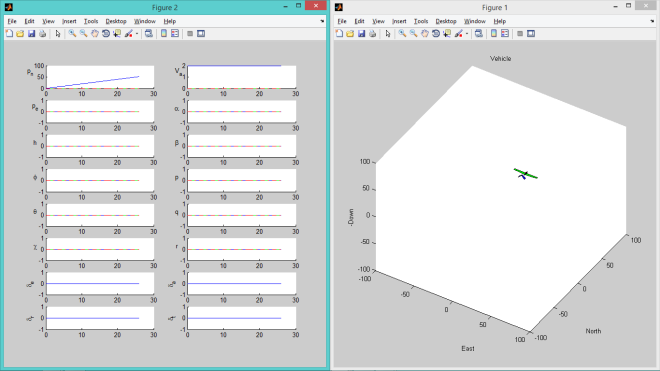
So that's a quick update of what I've been up to. The next step would be to model the aerodynamic equations over the rigid body dynamics skeleton. I plan on first implementing decoupled 3 DOF equation model which I'll later extend to a 6 DOF model of the UAV.
Cheers,
Karan
